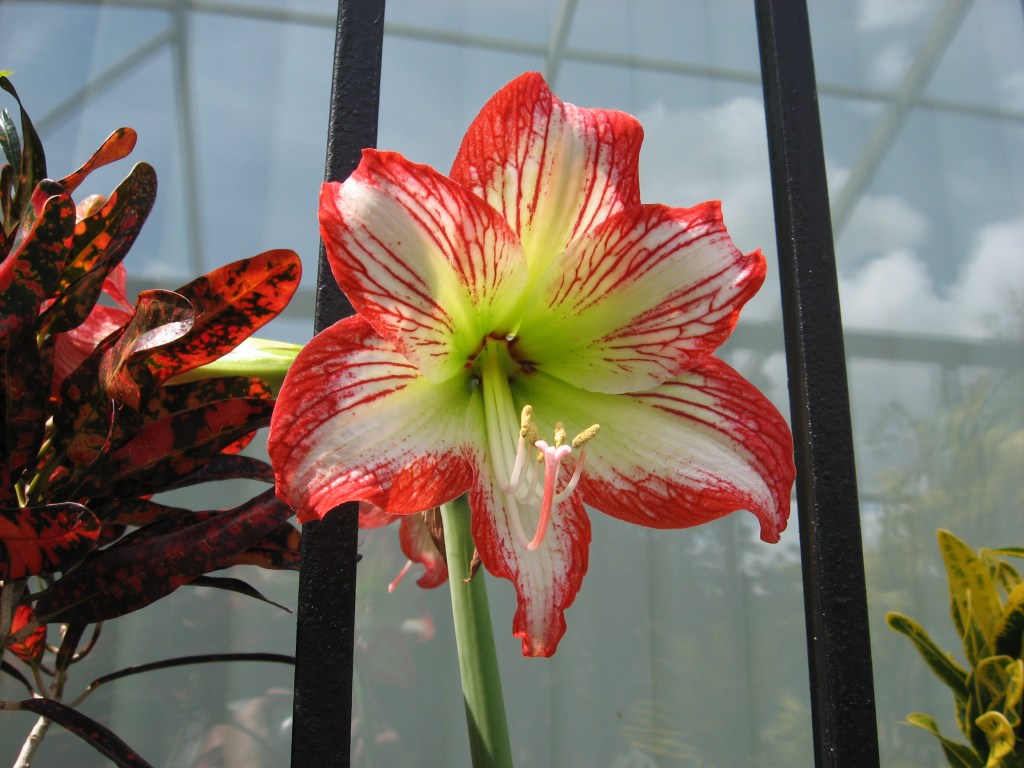Question: I forced my amaryllis to bloom during the holidays. What to do with bulbs with old flower stalks and a few leaves?
Answer: After a few seasons of good care, expect great blooms next year. If you have a decorative container surrounding your potted plant, remove it to improve soil drainage. At this point, remove the old flower stalks down to the leaf clusters. Also remove dead leaves. Other flower buds may also sprout from the bulb. Keep the plant moist and in a sunny location. Feed the bulbs with new containers in March that are about 1 to 2 inches larger in diameter. Feed with a slow-release container fertilizer in March, May, and August. When kept outdoors, seasonal rains often provide sufficient moisture. Otherwise, water once or twice a week until fall. It does not require much watering until new growth and flowering occurs in late winter.
Q: Dollarweed is invading my lawn. I was told to weed and feed in January or February. What should I do?
A: Dollarweed and other unwanted broadleaf invaders can often be controlled using lawn care products that include weed and feed. However, it is best to delay its use until the lawn begins to grow in late winter or spring. Weeds continue to grow during the cooler months, so some control is needed now. At this point, select a liquid broadleaf weed control product to apply to your St. Augustine lawn according to label instructions. Pay attention to the time that needs to elapse between herbicide applications. If you use liquids at this time, you may need to delay the use of weed control and feed products.
Q: I’m trying to move my garden from an underground plot to a raised bed. Will wood chips be useful in this new garden?
A: Skip the use of wood chips, which can bind nutrients needed for plant growth. Degrading chips use these nutrients to help organisms break down woody parts. Instead, fill the raised bed with potting soil. They are usually free of weeds and pests, at least during the first growing season. If your bed is very high off the ground, fill the base with landscape soil or topsoil, then add potting soil. All you need to grow crops in your garden is about 6 inches of good quality soil. Add wood chips to compost piles, nature trails, or as a light mulch to shrubbery plantings. When they break down, they ultimately release nutrients for plant growth.
Q: I planted a whole bag of cucumber seeds in a large container during September, and they were growing well until the plants turned yellow and died in December. What did I do wrong?
A: One possible cause of plant decline is having too many plants in a container. Also, the email photo shows cucumber leaves that lack sufficient nutrition. It was necessary to fertilize at least every other week with a liquid product made for container gardens. The leaves also showed signs of fungal activity. Next time, try planting one or two plants in a container, keeping the soil moist and fertilizing properly. You can also use slow-release fertilizers in place of liquid products, following label instructions.
Q: Annual weeds are an ongoing problem in our shrub beds. How can we prevent their growth?
A: Maintaining and renewing the mulch layer can reduce the presence of weed seeds that germinate, but some will still remain. Do not remove old mulch and add a light topping if needed. The use of pre-emergent herbicides is also effective. Several granular products are available at your local garden center. Plantings usually need to be established before spraying, so follow label instructions. Also, time must pass before new plantings can be added. As stated on the label, repeated applications are required for continued weed control. Some mulches also have built-in herbicides to help control weeds.
Botany Doctor: Click here for number 411 on pruning and cutting back crape myrtles.
Q: My landscape plantings primarily include unmulched shrubs and perennials. How do I safely apply mulch to this diverse collection, and which type is best?
A: University and consumer studies have shown that all common mulches extend watering intervals, reduce weeds, and help maintain even soil temperatures. The type of mulch that looks best on your plantings is your choice. A 1- to 2-inch layer is best for a plant mix like this. Place mulch a few inches from the base of your plants and use a small amount on annuals and perennials.
Q: I added a citrus tree to my landscape, but it’s getting a little too tall. When should I prune?
A: There may not be a perfect time to do the trimming because you are constantly removing fruit, flowers, buds, or new stems. However, if you need to trim it, the best time is around mid-February, before new growth begins. There’s no need to waste your tree’s time by waiting until later in the season to cut off new growth or fruit. Pruning in February removes weakly intertwined branches and buds that have sprouted from below the graft union. Reshape the tree if necessary, returning branches to buds along the stem and at the corners or along the trunk. Keep in mind that the heavier the pruning, the longer it will take for the tree to resume production.
Tom McCubbin is an emeritus urban horticulturist for the University of Florida Cooperative Extension Service. Write to Orlando Sentinel, PO Box 2833, Orlando, FL. 32802. Email: TomMac1996@aol.com.

